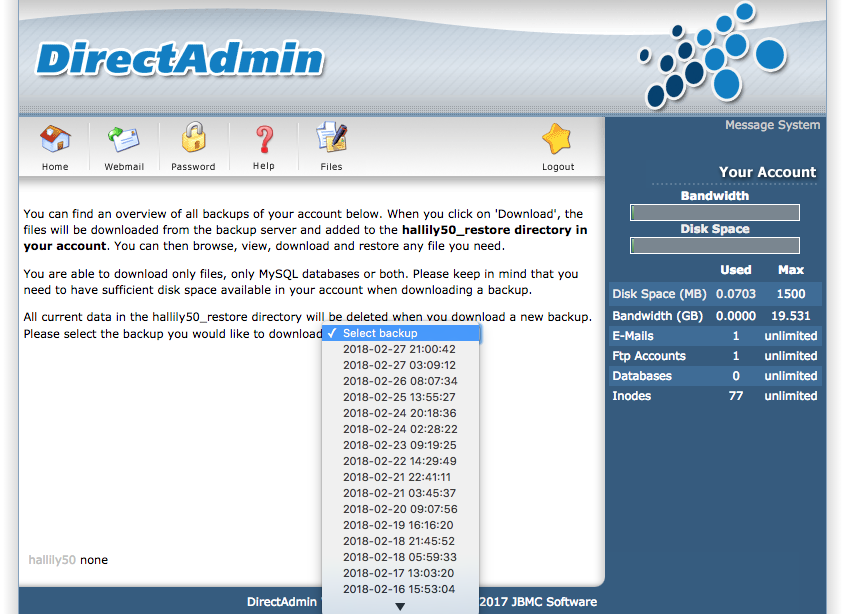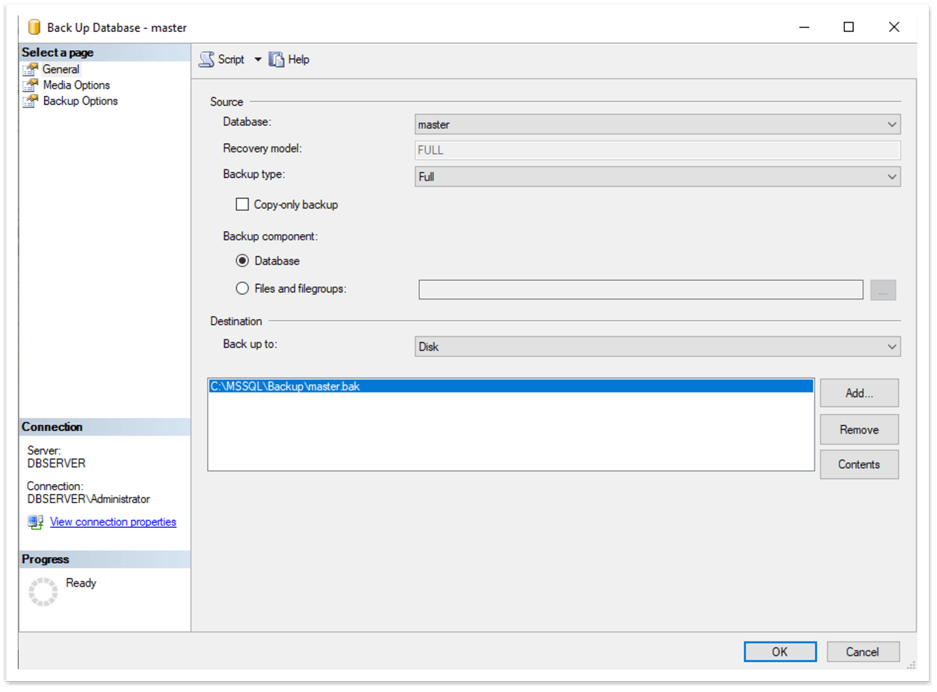
 Report generation by Database Consistency Checker Utility. ssibility of input/output errors or segmentation faults. How to Determine Whether Master Database Is Corrupt or Not?īeing a system administrator, it is important for you to know the symptoms that may indicate the corruption or damage in your master database. In brief, if anything happens to the master database, then you can’t start and productively work on your SQL server. This means the total user & login details, and the information of pointers to all the databases are stored on the master database. The core information of master database is recorded in a physical file, called MDF files, whereas the parallel transaction logs are stored on to the masterlog.ldf file. This doesn’t use the StopAt command for restores – it simply doesn’t restore transaction logs that have this date/time in it.A Master Database is highly important for an SQL server, as it holds the primary configuration details of the SQL server. NVARCHAR(14) null – if you want to stop restoring logs as of a certain time, you can pass in a date/time pass in a date time like ‘20170508201501’. BIT, default=0 – whether or not to recover the database (RESTORE DATABASE WITH RECOVERY so that it is now usable). default=0 – whether or not you are continuing to restore logs after the database has already been restored without recovering it. BIT, default=0 – whether or not you want it to run DBCC CHECKDB after the restore, it assumes you are using Ola’s DatabaseIntegrit圜heck stored procedure. NVARCHAR(260), default=NULL – new location for the data file(s), used when NVARCHAR(260), default=NULL – new location for the log file, used when BIT, default=0 – whether or not you are testing restores, if set to 1 then it drops the database at the end. BIT, default=0 – whether or not you want to use a different location for the database files than what was used on the source server, leave off or set to 0 if using the same path as the source.
Report generation by Database Consistency Checker Utility. ssibility of input/output errors or segmentation faults. How to Determine Whether Master Database Is Corrupt or Not?īeing a system administrator, it is important for you to know the symptoms that may indicate the corruption or damage in your master database. In brief, if anything happens to the master database, then you can’t start and productively work on your SQL server. This means the total user & login details, and the information of pointers to all the databases are stored on the master database. The core information of master database is recorded in a physical file, called MDF files, whereas the parallel transaction logs are stored on to the masterlog.ldf file. This doesn’t use the StopAt command for restores – it simply doesn’t restore transaction logs that have this date/time in it.A Master Database is highly important for an SQL server, as it holds the primary configuration details of the SQL server. NVARCHAR(14) null – if you want to stop restoring logs as of a certain time, you can pass in a date/time pass in a date time like ‘20170508201501’. BIT, default=0 – whether or not to recover the database (RESTORE DATABASE WITH RECOVERY so that it is now usable). default=0 – whether or not you are continuing to restore logs after the database has already been restored without recovering it. BIT, default=0 – whether or not you want it to run DBCC CHECKDB after the restore, it assumes you are using Ola’s DatabaseIntegrit圜heck stored procedure. NVARCHAR(260), default=NULL – new location for the data file(s), used when NVARCHAR(260), default=NULL – new location for the log file, used when BIT, default=0 – whether or not you are testing restores, if set to 1 then it drops the database at the end. BIT, default=0 – whether or not you want to use a different location for the database files than what was used on the source server, leave off or set to 0 if using the same path as the source.  NVARCHAR(MAX) – full path with ending backslash where the LOG backups are stored. NVARCHAR(MAX) – full path with ending backslash where the FULL backups are stored. NVARCHAR(128), default=NULL – name of the restored database, can leave off or set to NULL if the restored name will be the source database’s name.
NVARCHAR(MAX) – full path with ending backslash where the LOG backups are stored. NVARCHAR(MAX) – full path with ending backslash where the FULL backups are stored. NVARCHAR(128), default=NULL – name of the restored database, can leave off or set to NULL if the restored name will be the source database’s name. 
NVARCHAR(128) – name of the source database.










